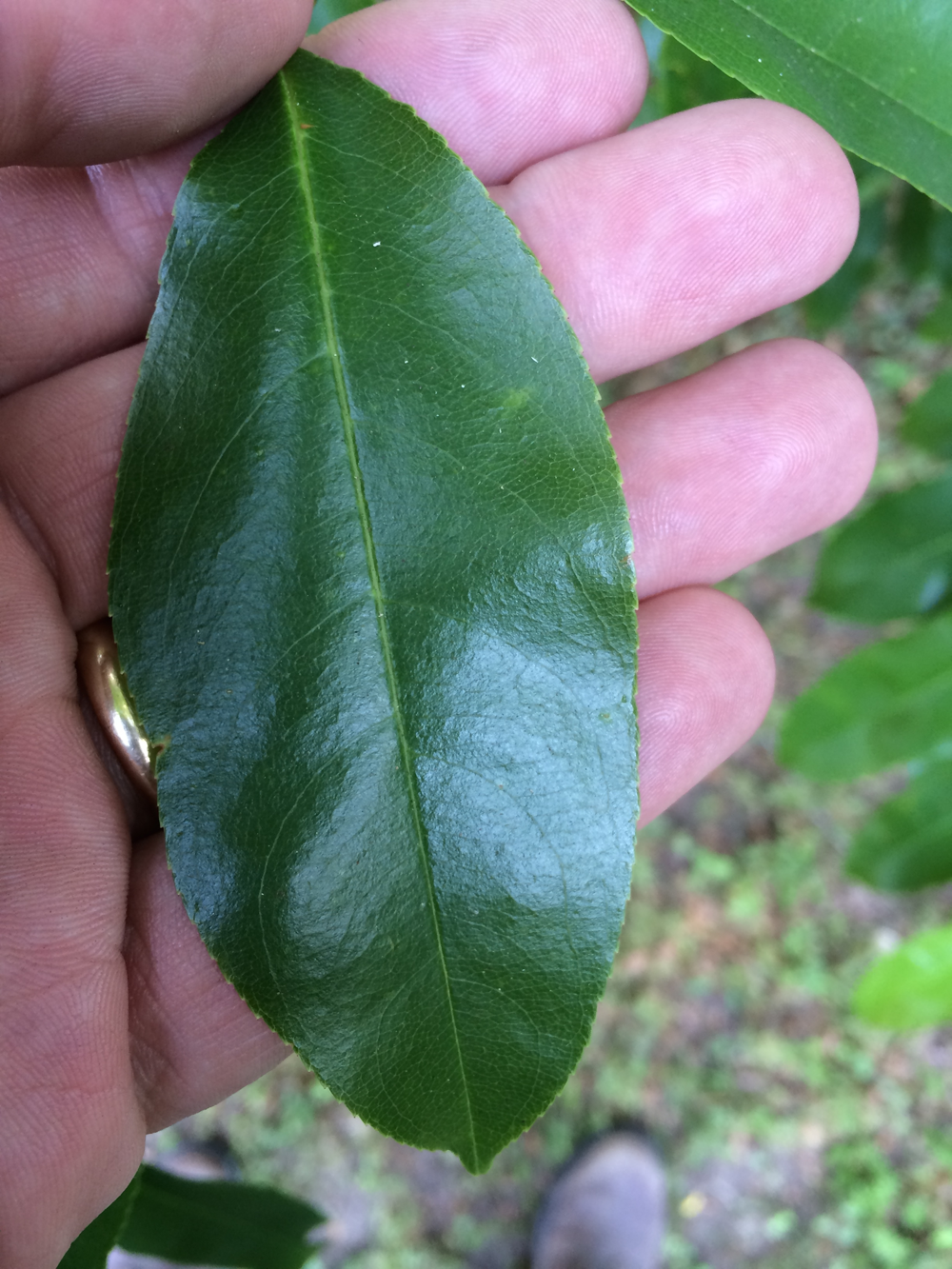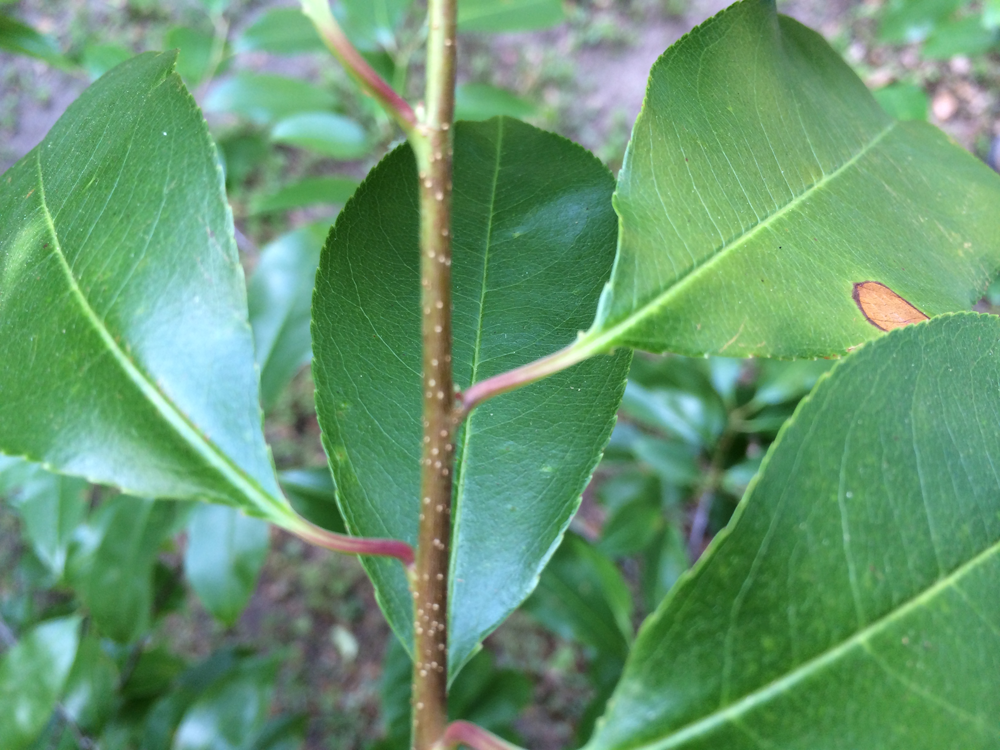This spring has been cooler than most and many areas just now have grass that is coming along. It is this time of year that cows will seek out tender green foliage while browsing.
Cherry trees are prolific fruit producers that serve as a food source for many native birds. After consuming the fruit and the pit, these birds will commonly roost on fences wires. This is why cherry trees are one of the most common woody plants found growing on pasture boarders.
Though cherry trees are hardy, ornamental plants, their leaves can become highly toxic to cattle. Cherry leaves contain the chemical prunasin that is stored in the leaves and, in their normal state, are non-toxic. However, when the leaves are damaged or stressed, the plant quickly metabolizes prunasin into cyanide as a defense mechanism. As a general rule, the older the leaf – the more toxin it contains. Additionally, wilted leaves have a dramatically higher level of cyanide than fresh tissue. So if a limb is ever broken off in a storm causing the leaves to wilt and then be consumed by cattle, the likelihood of survival is slim.

Identification of cherry is fairly easy. The first step is to look at the leaf. Though the leaves have a similar shape and size as compared to persimmon, cherry leaves have serrations along the edge while persimmon is smooth (Picture 1). Secondly, cherry has white markings (lenticels) on the stem, which are absent in many other trees (Picture 2).
It is important to rid your fences of cherry trees to protect curious cattle. The safest way to accomplish this is to cut the trees and remove them from the area. Remember, access to wilted leaves is far more dangerous to cattle than fresh leaves, so leaving them in the field is a bad idea. After cutting additional action must be taken as the stump will quickly resprout if not treated. Therefore, spraying the freshly cut stump surface with a 25% solution of triclopyr ester (Trade-names- Remedy Ultra, or others) will prohibit growth of new shoots.
Removing these troublesome trees will be a cumbersome task, but can pay huge dividends if the herd is protected.

Source:ufl.edu